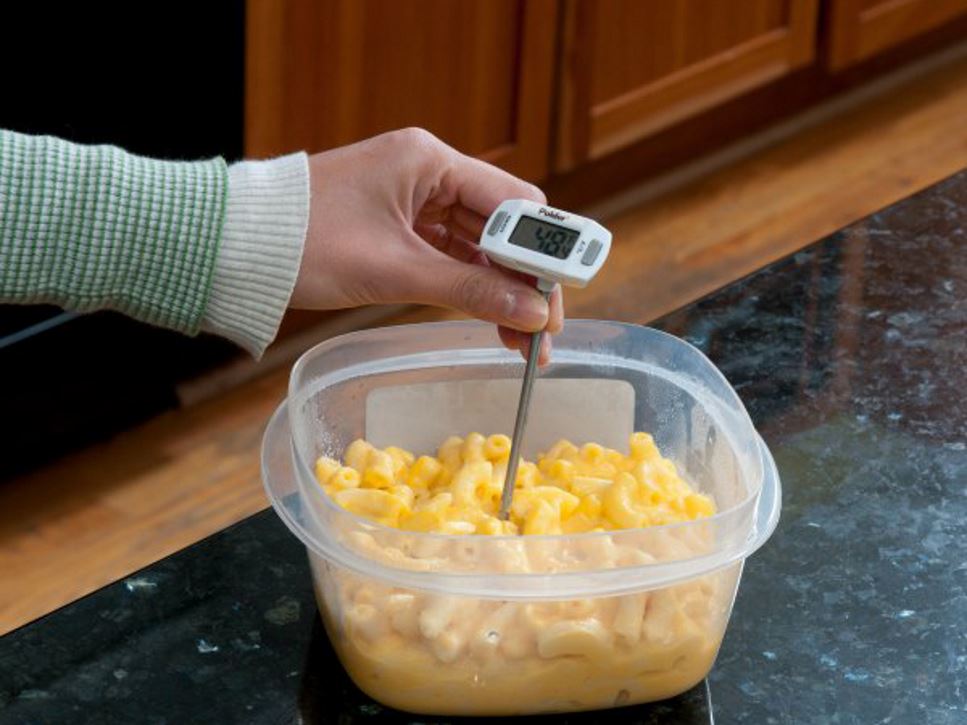Have you ever thought of taking your thermometer's temperature? For the sake of both food safety and quality, it's a good idea to give your food thermometer a regular check-up.
There are two simple methods to check the accuracy of a food thermometer — one uses ice and the other uses boiling water. This is because freezing and boiling points are almost always the same, with the exception of certain altitudes.
Ice Water Method
Materials needed: a large glass, crushed ice and clean water
After filling a large glass with finely crushed ice, pour clean tap water on top of the ice and stir well. Dip the food thermometer stem 2 inches into the glass of ice water without touching the bottom or the sides of the glass. Wait 30 seconds to allow the thermometer to adjust. It should read 32°F.
Boiling Water Method
Materials needed: a deep pot and water
In a deep pot, bring distilled water to a rolling boil. Dip the thermometer stem 2 inches into the boiling water without touching the bottom or sides of the pot. Wait 30 seconds and the thermometer should read 212°F.
How to Calibrate Thermometers
The process of adjusting your thermometer for accuracy is known as calibration. Different types of thermometers may need to be calibrated in different ways so make sure to check the manufacturer's instructions.
For dial or non-digital thermometers: If the temperature does not read 32°F using the ice water method or 212°F for the boiling water method, adjust the temperature by turning the calibration nut just under the head of the thermometer until the pointer reads the correct temperature or follow the manufacturer's instructions. Keep the thermometer in the water as you adjust, as the temperature will change once you remove it.
For digital thermometers: Follow the instructions provided by the manufacturer. Some thermometers cannot be calibrated.
Note: In high-altitude areas, water boils at a lower temperature, so check with your local Cooperative Extension Service or Health Department for the exact temperature of boiling water in your area.
References
Find a Nutrition Expert
Looking for credible nutrition information and recommendations? The Academy of Nutrition and Dietetics' network of credentialed food and nutrition practitioners are ready to help!

